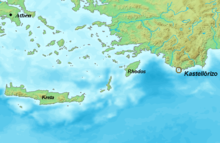
The Battle of Cape Matapan was a naval battle during the Second World War between the Allies, represented by the navies of the United Kingdom and Australia, and the Royal Italian navy, from 27 to 29 March 1941. Cape Matapan is on the south-western coast of the Peloponnesian Peninsula of Greece.
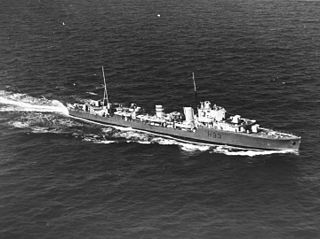
HMS Hereward, named after Hereward the Wake, was an H-class destroyer built for the Royal Navy in the mid-1930s. She was assigned to the Mediterranean Fleet before and the ship spent four months during the Spanish Civil War in mid-1937 in Spanish waters, enforcing the arms blockade imposed by Britain and France on both sides of the conflict. When the Second World War began in September 1939, the ship was in the Mediterranean, but was shortly transferred to the South Atlantic to hunt for German commerce raiders and blockade runners, capturing one of the latter in November. Hereward was transferred to the Home Fleet in May 1940 and rescued Queen Wilhelmina of the Netherlands after the Germans had invaded.

The Battle of Calabria, known to the Italian Navy as the Battle of Punta Stilo, was a naval battle during the Battle of the Mediterranean in the Second World War. Ships of the Regia Marina were opposed by vessels of the Mediterranean Fleet. The battle occurred 30 nmi to the east of Punta Stilo, Calabria, on 9 July 1940. It was one of the few naval battles of the Mediterranean campaign involving large numbers of ships on both sides, claiming victory. The battle was indecisive and the ships returned to base; it was the first battleship engagement between the Regia Marina and the Mediterranean Fleet.
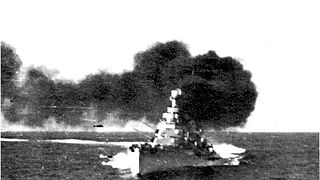
The Battle of Cape Spartivento, known as the Battle of Cape Teulada in Italy, was a naval battle during the Battle of the Mediterranean in the Second World War, fought between naval forces of the Royal Navy and the Italian Regia Marina on 27 November 1940.

The Second Battle of Sirte was a naval engagement in the Mediterranean Sea, north of the Gulf of Sidra and south-east of Malta, during the Second World War. The escorting warships of a British convoy to Malta held off a much more powerful squadron of the Regia Marina. The British convoy was composed of four merchant ships, escorted by four light cruisers, one anti-aircraft cruiser and 17 destroyers. The Italian force comprised a battleship, two heavy cruisers, one light cruiser and ten destroyers. Despite the British success at warding off the Italian squadron, the Italian fleet attack delayed the convoy's planned arrival before dawn, which exposed it to intense air attacks that sank all four merchant ships and one of the escorting destroyers in the following days.

The Battle of the Mediterranean was the name given to the naval campaign fought in the Mediterranean Sea during World War II, from 10 June 1940 to 2 May 1945.

The First Battle of Sirte was fought between forces of the British Mediterranean Fleet and the Regia Marina during the Battle of the Mediterranean in the Second World War. The engagement took place on 17 December 1941, south-east of Malta, in the Gulf of Sirte. It was tactically inconclusive as both forces were limited by the strategic goal of protecting a convoy of their own and as such, neither were looking to force battle.

Operation Excess was a series of British supply convoys to Malta, Alexandria and Greece in January 1941. The operation was the first to encounter Luftwaffe anti-shipping aircraft in the Mediterranean Sea. All the convoyed freighters reached their destinations. The destroyer Gallant was disabled by Italian mines and Axis bombers severely damaged the cruiser Southampton and the aircraft carrier Illustrious.

Operation Harpoon was one of two simultaneous Allied convoys sent to supply Malta in the Axis-dominated central Mediterranean Sea in mid-June 1942, during the Second World War. Operation Vigorous was a west-bound convoy from Alexandria and Operation Harpoon was an east-bound convoy operation from Gibraltar.

HMS Decoy was a D-class destroyer of the Royal Navy. Ordered in 1931, the ship was constructed by John I. Thornycroft & Company, and entered naval service in 1933. Decoy was initially assigned to the Mediterranean Fleet before she was transferred to the China Station in early 1935. She was temporarily deployed in the Red Sea during late 1935 during the Abyssinia Crisis, before returning to her duty station where she remained until mid-1939. Decoy was transferred back to the Mediterranean Fleet just before the Second World War began in September 1939. She briefly was assigned to West Africa for convoy escort duties in 1940 before returning to the Mediterranean. The ship participated in the Battles of Calabria without significant damage and escorted ships of the Mediterranean Fleet for most of the rest of the year.
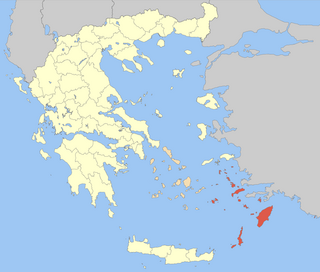
The Dodecanese campaign of World War II was an attempt by Allied forces to capture the Italian Dodecanese islands in the Aegean Sea following the Armistice with Italy in September 1943, and use them as bases against the German-controlled Balkans. Operating without air cover, the Allied effort was a costly failure, the whole of the Dodecanese falling to the Germans within two months. The Dodecanese campaign, lasting from 8 September to 22 November 1943, resulted in one of the last major German victories in the war.

The Battle of the Espero Convoy on 28 June 1940, was the first surface engagement between Italian and Allied warships of the Second World War. Three 36 kn Italian destroyers made a run from Taranto for Tobruk in Libya to transport Blackshirt anti-tank units, in case of an armoured attack from Egypt by the British.

HMS Defender was a D-class destroyer built for the Royal Navy in the early 1930s. The ship was initially assigned to the Mediterranean Fleet before she was transferred to the China Station in early 1935. She was temporarily deployed in the Red Sea during late 1935 during the Abyssinia Crisis, before returning to her assigned station where she remained until mid-1939. Defender was transferred back to the Mediterranean Fleet just before World War II began in September 1939. She briefly was assigned to West Africa for convoy escort duties in 1940 before returning to the Mediterranean. The ship took part in the Battles of Calabria, Cape Spartivento, and Cape Matapan over the next year without damage. Defender assisted in the evacuations from Greece and Crete in April–May 1941, before she began running supply missions to Tobruk, Libya in June. The ship was badly damaged by a German bomber on one of those missions and had to be scuttled by her consort on 11 July 1941.

HMS Kimberley was a K-class destroyer of the Royal Navy. She served in the Second World War and survived it, being one of only two of the K-class to do so. So far she has been the only ship of the Royal Navy to bear the name Kimberley, after the town of Kimberley, Northern Cape, site of the Siege of Kimberley in the Second Boer War. She was adopted by the civil community of Eastwood, Kimberley and Selston, Nottinghamshire in 1942 after a successful Warship Week campaign for National Savings.

The Battle of Cape Passero (1940), was a Second World War naval engagement between the British light cruiser HMS Ajax and seven torpedo boats and destroyers of the Italian Regia Marina, southeast of Sicily, in the early hours of 12 October 1940. It took place in the aftermath of a British supply operation to Malta.
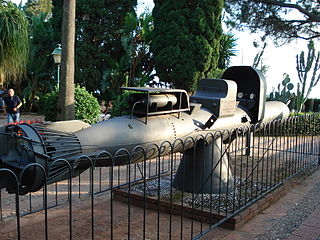
The Raid on Alexandria was carried out on 19 December 1941 by Italian Navy divers of the Decima Flottiglia MAS, who attacked and disabled two Royal Navy battleships in the harbour of Alexandria, Egypt, using manned torpedoes.

Operation MB8 was a British Royal Navy operation in the Mediterranean Sea from 4 to 11 November 1940. It was made up of six forces comprising two aircraft carriers, five battleships, 10 cruisers and 30 destroyers, including much of Force H from Gibraltar, protecting four supply convoys. It consisted of Operation Coat, Operation Crack, Convoy MW 3, Convoy ME 3, Convoy AN 6 and the main element Operation Judgement.

The Action in the Strait of Otranto [also the Battle of the Strait of Otranto (1940)] was the destruction of an Italian convoy on 12 November 1940 during the Battle of the Mediterranean in the Second World War. It took place in the Strait of Otranto in the Adriatic Sea, between the Royal Navy and the Italian Royal Navy.

The Attack on Convoy AN 14 was a naval engagement during the Second World War between a British naval force defending a convoy of merchant ships, sailing from Port Said and Alexandria to Piraeus in Greece and two Italian torpedo boats which intercepted them north of the island of Crete on 31 January 1941. The Italian vessels, Lupo and Libra launched two torpedoes each. The torpedoes fired by Libra missed their target but one from Lupo hit the 8,120 GRT British tanker Desmoulea which had to be towed to Suda Bay in Crete and beached; the ship was disabled for the rest of the war. One other merchant ship turned back; the other eight vessels reached Piraeus.

